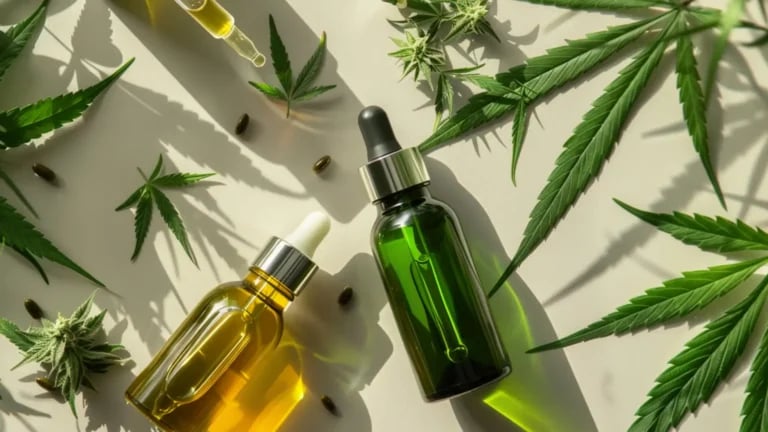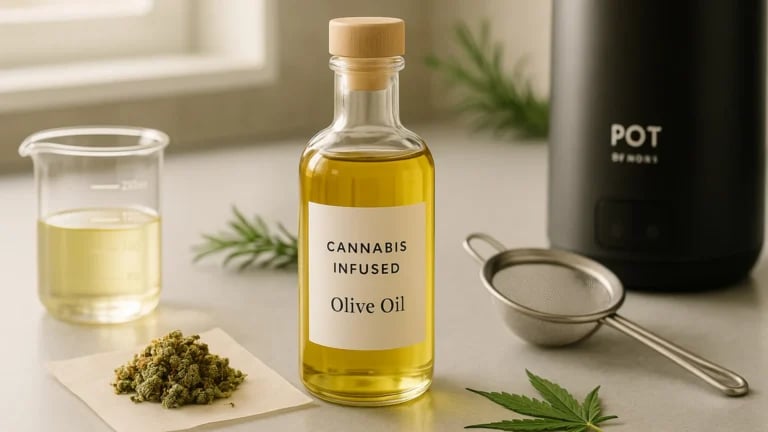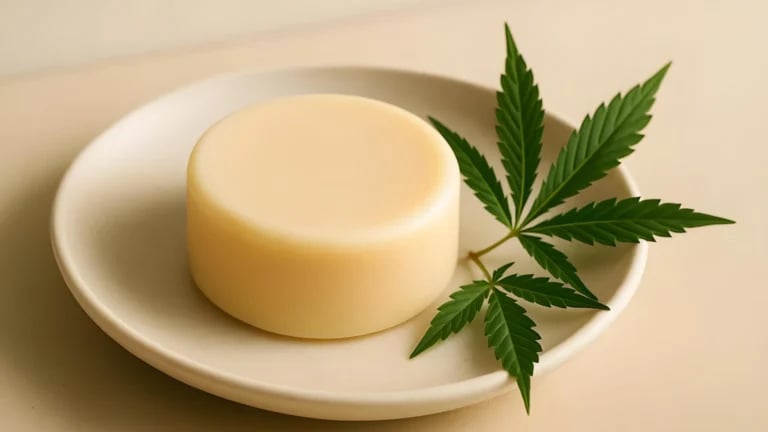Making my own cannabis lotion at home has proven to be a rewarding experience. I love using CBD products for their therapeutic benefits. I’ve discovered that making a custom product allows for a personalised approach to skincare. The process involves macerating cannabis with a carrier oil and then blending it with a choice of additional skin-nourishing ingredients. I want to make a skincare product with CBD and THC that also nourishes and pampers my skin.
Table of Contents
I make my own skincare products because I want to control how pure and effective they are. I grow my own cannabis plants and use premium carrier oils to ensure that the final product is pure and free from any harmful chemicals or additives. I can adjust the concentration of Cannabidiol or Tetrahydrocannabinol, which is not always possible with store-bought products. The customised approach helps me care for my skin based on my specific needs, such as moisturising, soothing irritation, or targeting problem areas.
Always remember that the quality of the ingredients used are very important, and in many countries, it’s necessary to use legally acquired, non-psychoactive CBD to comply with the law. I source my ingredients with care, prioritising suppliers with a reputation for quality and transparency. By doing so, I am confident in the products I make, knowing that it is both safe and effective for personal use.
Cannabidiol can work to ease pain at the source, while Tetrahydrocannabinol affects how the mind perceives pain. If you grow your own cannabis, you have more freedom to decarboxylate for Cannabidiol or Tetrahydrocannabinol – but you should still use good quality cosmetic ingredients and preservative that I recommend.
The Benefits of Cannabis in Topicals
Cannabis-infused topicals have gained popularity for their potential therapeutic benefits. Let’s explore how cannabis, specifically CBD and THC, contribute to pain relief and support skin health.
Pain Relief and Anti-Inflammatory Effects
Cannabis is known for its analgesic properties. When applied as a topical, cannabinoids like Cannabidiol and Tetrahydrocannabinol interact with the body’s endocannabinoid system, which plays a part in regulating pain. CBD products such as salves, balms, and lotions can help to alleviate acute pain, soreness, and inflammation without the psychoactive effects typically associated with THC. This localised approach to pain management makes cannabis topicals a promising option for those seeking relief.
When you macerate a carrier oil with cannabis in the POT by NOIDS decarboxylator, you can choose whether you want your macerated oil to be Cannabidiol rich or Tetrahydrocannabinol rich (assuming there are good levels of CBD in the cannabis strain you are using). Although this formulation will walk you through how to make a CBD lotion, there are good reasons for using a THC-infused oil as well. Cannabidiol works to ease pain at the source, while Tetrahydrocannabinol affects how the mind perceives pain, and together, they are a powerful combination.
Skin Health and Conditions
In terms of skin health, cannabinoids exhibit properties that are beneficial for a variety of skin conditions. CBD, in particular, has a good ability to regulate the production of sebum, which can reduce the likelihood of acne. This does not mean that it dries the skin out, it just regulates the production of excess sebum, so your skin is not so oily.
The anti-inflammatory qualities of cannabinoids also calm skin irritations and inflammations like psoriasis or eczema. By incorporating cannabis into skincare formulations, users can experience an improvement in overall skin health and condition. Importantly, they can not only be used daily, but also several times during the day for increased effect.
CBD Lotion Versus THC Topicals
CBD lotion has gained popularity for its potential benefits without the psychoactive effects of THC. In this section, I’ll examine how CBD lotion compares to other THC topicals and address the legalities and availability.
Comparisons with THC-Infused Products
CBD topicals such as CBD lotion differ significantly from Tetrahydrocannabinol-infused products. While both are derived from the cannabis plant, the active compounds have unique properties. The skin-nourishing basic formulation of the lotion can be used for CBD or THC.
CBD Lotion:
- Non-psychoactive: Does not induce the ‘high’ associated with Tetrahydrocannabinol.
- Application: Aimed at localised relief, it is typically used for its potential anti-inflammatory and pain-relieving properties.
THC-Infused Topicals:
- Psychoactive: May induce a ‘high’, depending on how much Tetrahydrocannabinol is absorbed through the skin.
- Regulated: Often subjected to stricter regulations given their psychoactive nature.
- Perception: Tetrahydrocannabinol can reduce or change the perception of pain, so it often makes a good partner for CBD products.
Legal Considerations and Availability
The legal landscape for CBD and THC products varies by country, and even within countries.
CBD Lotion:
- Legal status: Generally legal when derived from hemp with less than 0.2% Tetrahydrocannabinol content.
- Availability: Widely available both online and in physical stores.
- Quality: Not always made with the best cosmetic ingredients, hence the reason to make your own.
THC Products:
- Legal status: Tetrahydrocannabinol levels above 0.2% can make these products illegal in many countries.
- Availability: Their distribution is often restricted to licensed dispensaries where legal.
- Simplicity: So easy to make yourself at home.
Ingredients Spotlight
Choosing the right ingredients is essential for creating effective and stable cannabis-based skincare products at home. I’ll guide you through the components and their functional benefits in your homemade CBD lotion.
Preparing the Cannabis-Infused Oil
My first step involves decarboxylating cannabis to activate the cannabinoids. Then, I combine it with Poppy Seed oil and gently heat the mixture to macerate it. I use the POT by NOIDS, and this blog post A Review Of The POT By NOIDS Herbal Infuser will discuss the different settings and ways you can use it.
The full method is described in this blog post: Olive Oil and Cannabis Infused CBD for Skin and Hair Care, and you just swap the Olive oil for Poppy Seed oil.
Poppy Seed Oil
I find Coconut oil a little too greasy for CBD topicals, so I prefer to use other carrier oils that feel nicer and have a better essential fatty acid profile. Poppy Seed Oil (INCI: Papaver Somniferum Seed Oil) is heat-tolerant, allowing it to withstand the decarboxylation process to extract CBD. It will also be used in Stage 1 Heat of the formulation.
Typical Fatty Acid Profile of Poppy Seed Oil
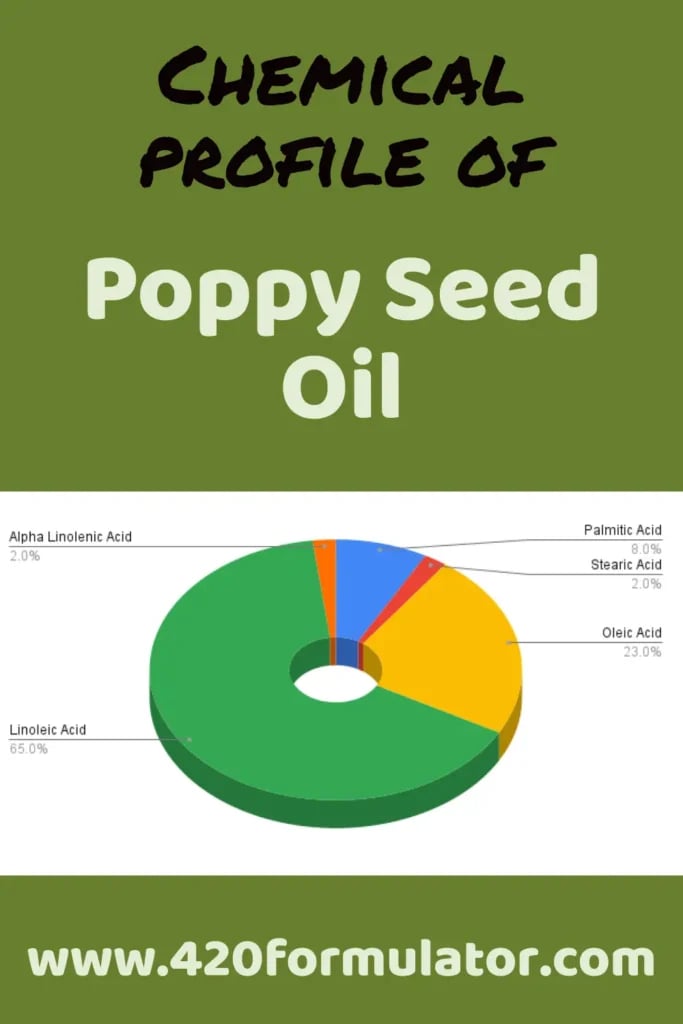
C16:0 Palmitic Acid 5% to 11%
C18:0 Stearic Acid 1% to 3%
C18:1 Oleic Acid (Omega-9) 15% to 30%
C18:2 Linoleic Acid (Omega-6) 60% to 70%
C18:3 Alpha Linolenic Acid (Omega-3) max 2%
Saponification Value mg KOH / g 163
Poppy Seed Oil for Skin Care
- It is rich in Omega-9 essential fatty acid, which reduces the appearance of fine lines and wrinkles.
- It is very regenerative for damaged skin that has been in the sun too much for too many years. Dehydrated skin becomes more hydrated and flexible, eliminating flakiness and feelings of tightness.
- It calms irritation, improves radiance, and actually reduces photoageing pigmentation from solar damage.
- Elasticity is improved in your skin, leaving it feeling softer, smoother, and more supple.
- Poppy Seed oil is suitable for all skin types, including sensitive skin. It is also a good oil to use on irritated skin and in baby products. Its protective qualities will help protect from nappy rashes and other irritations.
- Rich in Linoleic Acid, an essential Omega-6 fatty acid, it penetrates deep into the skin, restoring normal skin cell membrane function. This is important for skin that needs the protection an oil rich in antioxidants can give by targeting free radicals.
- The antioxidant quality of Poppy Seed oil tackles free radical formation and consequent free radical damage. This is important for slowing down the ageing process with more mature skin types. It has a stimulating effect on the skin with a strong lifting effect, revitalizing tired-looking and flabby skin.
- You will find that when blended with other oils, Poppy Seed oil improves the skin penetration of those oils. It is very effective in reducing Trans Epidermal Water Loss (TEWL), thus giving excellent skin hydration levels.
- The oil penetrates quickly without leaving any greasiness and leaves the skin feeling nourished and hydrated and very smooth. This makes Poppy Seed Oil ideal to use as an after-shower oil, as well as in other products.
- It effectively soothes acne and reduces the chances of future outbreaks because of its rich Omega-6 content. When used as part of an oil blend, the elegant feel of the Poppy Seed oil makes other oils feel thinner in consistency. This is a great advantage for products designed for acne-prone skin.
- Poppy Seed Oil is great for massage products because it easily absorbs into the skin. This allows you to use richer oils like Castor Oil while keeping the skin feeling toned and lifted. Use it in body sculpting products and body wraps.
- Being rich in natural tocopherols, it has a very beneficial effect on dermatitis-like skin conditions and psoriasis-prone skin.
- As it softens rough skin, White Poppy Seed Oil is a great choice for hand and foot creams.
Poppy Seed Oil for Hair Care
- Poppy Seed Oil strengthens the hair shaft, making it ideal for use after hair processing or weave removal.
- It can dramatically improve the appearance of split ends. It has no sticky after feel on the hair and does not make the hair lank.
- It makes hair softer and more flexible, making it easier to comb through whilst imparting a good shine.
- Poppy Seed Oil nourishes and moisturises both the hair shaft and scalp, making it a great choice for anti-dandruff products.
*As an Amazon Associate, I earn from qualifying purchases.
Shea Butter Benefits
Shea Butter (INCI: Butyrospermum Parkii Butter) is made from the pressed stones of the Shea Butter tree. After pressing, the butter is a dark yellow colour, which is then deodorised and filtered to enhance its shelf life. The colour also improves, becoming a pale white. I find this better than raw Shea Butter, which can go rancid quickly in a matter of weeks.
- Shea Butter is a superb emollient that is excellent for conditioning your skin.
- It moisturises your skin and restores its elasticity.
- It contains a natural SPF, but this is not high enough to be used as a sun protection product. The low level does, however, give some daily defence against the damaging effects of UV light whilst repairing skin damage.
- It is protective and healing, especially for dry and sun-damaged skin. It contains phytosterols which stimulate the basal layer of the skin to regenerate faster, giving younger and fresher-looking skin.
- It is superb to use in hair products, especially for dry and processed hair.
*As an Amazon Associate, I earn from qualifying purchases.
Olivem® 1000 Emulsifier
I use Olivem® 1000 (INCI: Cetearyl Olivate and Sorbitan Olivate), which is a natural emulsifier from olives and RSPO certified palm oil, to create a stable emulsion that keeps water and oil mixed without separating over time. The naturally occurring fatty acids from olives are chemically very similar to the skin’s natural oils.
It creates an Oil-in-Water (O/W) emulsion. When the emulsion is formed, it creates a liquid crystal structure that mimics the stratum corneum of the epidermis. This means the resulting emulsion penetrates the skin very easily. As such, it can be classified as a moisturiser, as well as an emulsifier.
This non-ionic emulsifier is listed as 100% natural origin. It is PEG Free, not ethoxylated and readily biodegradable.
*As an Amazon Associate, I earn from qualifying purchases.
Vegetable Glycerin
Glucerin (INCI: Glycerin) is a great humectant that pulls moisture towards your skin and keeps it hydrated and moisturised. It is best not to use too much as it would make the finished product feel sticky – and it is simply not needed in large amounts. Most commercial Glycerin comes from the by-products of the slaughterhouse, but I much prefer to use vegetable-sourced Glycerin instead. Read more about the Benefits of Glycerin.
*As an Amazon Associate, I earn from qualifying purchases.
Xanthan Gum
Xanthan Gum (INCI: Xanthan Gum) is a thickening agent that is used to keep the emulsifier stable. It’s used in such a small amount that it doesn’t alter the product’s texture, but it keeps the oil and water emulsion stable. This means that you don’t need to add Aloe Vera gels as so many people suggest. Aloe Vera gel can be very drying on the skin. You also will not need to use beeswax, which can feel very “draggy” on the skin. Opting for a better emulsifier, such as Olivem® 1000, can help eliminate unnecessary ingredients.
*As an Amazon Associate, I earn from qualifying purchases.
Boiling Distilled Water
This is actually a really important part of the preservative system. Many preservatives are rendered less effective when they come into contact with minerals such as calcium. That’s why tap water is not a good idea. Use regular distilled water from the store.
The following ingredients are all used in the Stage 3 (Cool Down) phase of the lotion. These ingredients are heat-sensitive and are added to the emulsified cream once it has cooled below 40°C. To understand the formulation’s structure, it’s important to note that this part is added to the cream rather than being emulsified into it. That means there is a potential for more acidic ingredients to break the emulsion and cause it to split. I’ve worked everything out with this formulation, so there’s no issue. I just wanted to share this as some extra info.
Niacinamide Powder
Niacinamide (INCI: Niacinamide) is also known as Vitamin B3. It belongs to the family of B vitamins and is essential in the diet. Oral supplements are helpful, but they can cause a temporary side effect called “niacin flush”, which makes the skin feel hot and prickly for a few minutes after taking them.
This cosmetic-grade Vitamin B3 powder has very little Nicotinic Acid, preventing any flushing or prickling sensations. For external use only, it leaves the skin feeling comfortable when used in creams, lotions, gels, toners, and serums.
We use just a small amount in this formulation, but just look at the benefits it brings!
- Improves the appearance of ageing skin by stimulating new fibroblasts and collagen secretion. This is very helpful for all skin types, especially mature skin, as it reduces fine lines and wrinkles.
- It has a powerful anti-inflammatory action on acne-prone skin, reducing the severity of the eruptions. It enables acne-prone skin to behave more like normal skin types.
- It will help to rebalance the pigmentation of the skin, refine the pores, and leave a more even skin tone. It helps to give a shine-free finish to the skin.
- Excellent use in products for rosacea and age spots. It improves the resilience to external damage and reduces skin sensitivity, giving a very comfortable skin feeling.
- Very soothing to sensitive skin and can improve the appearance of hyperpigmented and photoaged skin. It also encourages the production of natural emollients in the skin which keep the skin soft and improve skin elasticity.
*As an Amazon Associate, I earn from qualifying purchases
Saliguard® PCG
As soon as you add water to a formulation, you must include a preservative. There are a huge range of them, and some are not very nice and hard to use. Saliguard® PCG (INCI: Caprylyl Glycol (and) Phenoxyethanol (and) Propylene Glycol), is wonderful, simple to use, and adds beneficial skin qualities. You can read more about Natural Preservatives in Cosmetics.
This preservative provides broad-spectrum protection against Gram-positive and Gram-negative bacteria, yeasts and moulds. It is parabens, formaldehyde and palm free. It is synthetically produced with non-GMO materials and is suitable for use in vegan products. Although it is heat tolerant up to 60 °C, I always recommend adding it to the Stage 3 (below 40 °C) stage. It works in a wide pH range from pH 3 to pH 10.
Preservatives can cause issues in formulations, but this one is straightforward and offers real benefits.
- Fully water-soluble.
- Has a skin conditioning effect as Caprylyl Glycol is a great humectant.
- Works well with creams and toners as well as shampoos and body washes.
- Does not change the fragrance of products.
- Does not change the colour of products.
- Prevents pH from drifting.
- It is extremely easy to use.
*As an Amazon Associate, I earn from qualifying purchases
Essential Oils and Their Benefits
Incorporating essential oils into cannabis topicals offers not only a therapeutic aroma but also additional skin benefits. It’s important to use them sparingly to avoid irritation. In this formulation, I am using Lavender and Spearmint.
Lavender Essential Oil
Lavender oil is well known for its calming and relaxing properties, helping reduce anxiety, stress, and depression. When combined in a CBD skincare product, it has anti-inflammatory, antifungal, antiseptic, antibacterial, and antimicrobial properties. The Lavender oil in the CBD topical can be absorbed through the skin, reducing inflammation in the applied area.
*As an Amazon Associate, I earn from qualifying purchases
Spearmint Essential Oil
Spearmint oil is known for its energy-inducing and mood-enhancing properties, making it a popular addition to CBD topicals. Its fresh, restorative fragrance helps uplift the mood and comfort emotional stress. Spearmint oil also has anti-inflammatory and antioxidant properties, which can help decongest red, swollen, and itching skin.Click to read more about Spearmint Essential Oil.
Spearmint oil offers several benefits due to its key compounds: Carvone, Limonene, 1,8-cineole, and β-Myrcene. These compounds have relaxant, expectorant, carminative, diuretic, antioxidant, anti-inflammatory, antifungal, stimulant, analgesic, anti-spasmodic, anti-viral, and antibacterial properties. You can read more about these terpenes in this blog post: 14 Top Terpenes in Cannabis and Essential Oils.
*As an Amazon Associate, I earn from qualifying purchases
Making the Lotion
Before you start, ensure you have the right tools and equipment to make the process smooth and enjoyable. After decarboxylating your cannabis and infusing it to create CBD oil, follow these three main stages. Let me guide you through each one and share the key ingredients I use.
Formulation:
Stage 1: (above 75℃)
10% Cannabis-infused Poppy Seed Oil
2% Shea Butter
5% Olivem® 1000
Stage 2: (above 75℃)
3.5% Vegetable Glycerin
0.2% Xanthan Gum
63% Boiling Distilled Water (buy it from your local supermarket)
Stage 3: (below 40℃)
4% Niacinamide Powder
10% Distilled Water (to dissolve the powder)
1.5% Saliguard PCG
0.4% Spearmint Essential Oil
0.4% Lavender Essential Oil
100% Total
Method:
- Weigh all the Stage 1 (fat stage) ingredients into a heat-safe beaker and place in the bain-marie to heat up to above 75℃.
- Combine the Stage 2 Glycerin and Xanthan Gum together to make a slurry. This stops the Xanthan Gum from clumping and going lumpy.
- Add the Stage 2 slurry to the hot water in a container that fits the immersion blender / stick blender. Blend to make it smooth, with no lumps.
- Add the heated Stage 1 to the Stage 2. Stir together with a silicon spatula. It is important to do this.
- Use the immersion blender for 30 seconds, keeping it at the bottom of the container.
- Leave to stand for 1 minute. Then blend again for a further 30 seconds.
- Switch to the silicone spatula and stir the mixture until it cools down. You can use a cold water bath to accelerate the cooling.
- When the temperature is below 40℃, add the Stage 3 (heat sensitive ingredients).
- Stir thoroughly to ensure everything is evenly blended, jar and label.
Enhance your lotion with these lesser-known essential oils known for their skin benefits.
Practical Tips for Homemade CBD Lotion
In crafting homemade CBD topicals, it’s crucial to ensure proper hygienic making and storage to maximise your product’s shelf life.
Storage and Shelf Life
Modern preservatives like Saliguard PCG will not “clean up” a dirty product. It is expected that you have followed the instructions to be clean and hygienic. I have seen no end of videos where the person is prodding and poking the ingredients with their bare fingers. That will introduce a wide range of bacteria that will quickly overcome the preservative. Use the tools suggested and keep your fingers out!
Finished products can be stored at room temperature, but keep away from direct sunlight as this can speed up oxidation and harm the cannabinoids. Just don’t keep the finished product on a sunny windowsill. You will find that they will be good for 12 to 18 months, on average. I recommend labelling your masterpiece with the date you made it for easier tracking.
Precautions and Patch Testing
Before incorporating any new topical into my regimen, I adhere to these key precautions:
- Patch Testing: I always conduct a patch test before using the lotion extensively, applying a small amount to a discreet patch of skin, and waiting 24 hours to observe any reactions.
- Usage Limitations: I avoid using the lotion on broken skin and discontinue use if I notice any irritation or adverse effects.
By respecting these guidelines, I know my CBD lotion is both safe and beneficial.
Conclusion
I’ve walked you through the process of creating a cannabis lotion at home, highlighting the importance of correct measurements, the use of high-quality ingredients, and the significance of thorough blending to achieve a consistent mixture.
Safety should always be paramount. Check the legality of cannabis use in your jurisdiction and consult with a healthcare professional before use, especially if you have underlying health concerns or are using other medications.
When you make CBD cannabis lotion at home, it’s a personalised experiment. Start with small batches to adjust the CBD concentration to your preference. Make notes of the formulation used and what the results were like for you. Then in the next batch, you can make changes if you want to.
Homemade bespoke cannabis skincare products can give you an amazing sense of achievement and satisfaction – as well as saving you money. By adhering to the guidance provided, I trust you’ll have the tools necessary to create a product tailored specifically to your needs. Remember, the journey is as valuable as the destination; learning and adapting are part of the process.
FAQ
What are the benefits of making your own cannabis lotion?
Homemade cannabis lotion lets you choose your own ingredients, strength, and scents, making it ideal for sensitive skin, targeted relief, and those wanting to avoid unwanted chemicals.
Will homemade CBD lotion get me high?
No, most CBD lotions are non-psychoactive and won’t make you high, even if they contain a small amount of THC. Topicals are designed for local effects, not a buzz.
What’s the difference between CBD lotion and THC lotion?
CBD lotions use cannabidiol for soothing and calming skin, while THC lotions contain tetrahydrocannabinol, which can target pain and inflammation, and be a lot more fun!
Can I use any type of cannabis for making lotion?
You can use high-CBD hemp, high-THC cannabis, or a blend, depending on your needs. Just make sure it’s decarboxylated first for the best results.
Is it legal to make cannabis lotion at home?
Legality depends on where you live. In most places, CBD from hemp is legal, but THC and homemade cannabis extracts might not be. Always check your local laws before starting.
How long does homemade cannabis lotion last?
If stored out of heat and direct sunlight, your cannabis lotion should last around 12 months. Ensure you follow the correct method when making it.
Can cannabis lotion help with pain or skin problems?
Many people use cannabis-infused lotions for aches, joint pain, and skin issues like eczema or dryness. It can ease discomfort and support skin health.
Can I use cannabis lotion on my face?
Yes, but stick to gentle formulas and patch test first, especially if you have sensitive or acne-prone skin. Avoid anything heavily scented or greasy if you’re prone to breakouts.
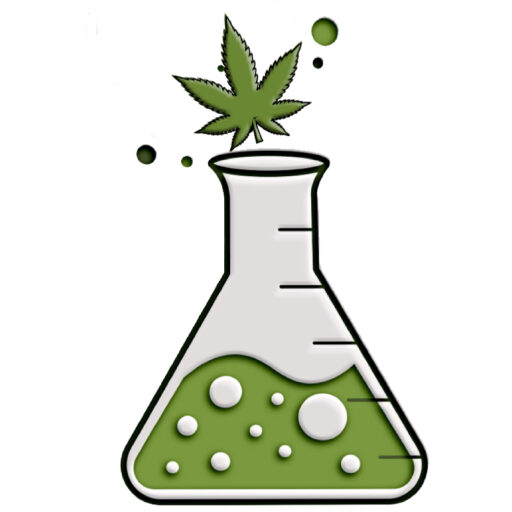
If you liked this blog post, I would love it if you shared it with a friend.
If you use Pinterest, please pin this post.
*As a POT by NOIDS affiliate, I earn from qualifying purchases.
*As an Amazon Associate, I earn from qualifying purchases.


